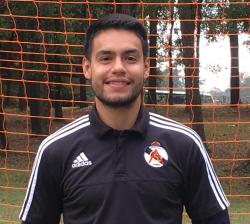Even before Blake Griffin went down to injury, it was clear that CP3’s departure was hurting the Clippers’ playoff chances.
Why are the Clippers in trouble? I’ll give you three reasons why.
1. Assist numbers are low… blah, blah, blah
Chris Paul’s exit to Houston is starting to become more noticeable on both sides of the ball. Consider the drop-off in assists production. In 2016, the Clippers finished 15th in the league, averaging 22.5 assists per game. This season, they’re averaging only 19.6 assists per game, currently tied for 27th in the league.

Courtesy: NBA.com
Coach Doc Rivers has shifted the offensive strategy to create an offense suited to Blake Griffin’s strengths. But LA is still producing low assist numbers as a team. They’re assisting on only 51% of scoring plays.
Griffin, who’s now injured, currently leads the team in points per game (22.8) and assists in per game (4.7). He’s followed by the injured point guard, Milos Teodosic (4.0), and shooting guard Lou Williams (3.7). Austin Rivers, son of Doc Rivers, has not contributed much by way of assists, despite having a bigger role since Paul’s departure. He’s averaging only 2.6 assists this year.
Just as revealing are the number of turnovers per game and the assists-to-turnover ratio. The loss of Chris Paul’s presence is felt most in those categories. The Clippers averaged 12.5 turnovers with a 1.8 assists-to-turnover ratio in 2016. This year the LAC are averaging 14.3 turnovers per game with a 1.4 assists-to-turnover ratio. The ball security Paul provided ranks among the best in NBA history. But the Clippers are now losing games because they don’t have a replacement ball-handler.
2. More rebounds, less offense?
The Clippers continue to dominate the offensive board and they also create second scoring chances, but they aren’t finishing those chances efficiently. They are 3rd in the league in offensive rebound percentage at 25.8% and they are in the middle of the pack defensively at 77.1%.
Even with added possessions on the offensive side, defensive rebounding hasn’t created enough possessions to compensate for the added turnovers per game.
Then there’s the matter of PACE. PACE measures the number of possessions per 48 minutes. PACE can help determine the speed of a team’s offensive approach, but it does not necessarily represent the final result of the efficiency of those offensive possessions. The Clippers rank 17th in the number of possessions per 48 minutes.
The San Antonio Spurs, on the other hand, rank at the bottom of the table. The Spurs have a higher net rating, meaning that they generate more defensive stops and score effectively when they have the chance. The Spurs currently rank 9th in the league in net rating, whereas the Clippers sit at 16th.
The Clippers are likely to sustain offensive rebound production, but will they score more on those added possessions for the remainder of the season?
3. Lack of true team identity
The recent off-season roster changes have created an identity issue. Yes, the team is no longer limited by Paul’s defensive liabilities (namely, his height and relative inability to keep up with younger, more athletic guards), but they have taken a significant blow on the offensive side of the court. They upgraded on both sides of the ball by signing guards Patrick Beverly and Williams, but this team has yet to become dominant on either side of the court.

Courtesy: Sporting News
How might that change? The Clippers could choose to become a defensive team with a strong, transition offense. LAC can do that because they rank 9th in the league in percentage of points off turnovers (17.4%). The roster is also capable of slowing down strong offensive teams.
But Rivers has yet to establish a system for Deandre Jordan, Griffin, and Beverly to thrive defensively and convert into effective scoring plays.
The reality is that this team is average offensively and defensively in terms of points per game. The only identity the Clippers have established is isolation basketball. Data show that 49% of the made field goals are unassisted, which means that the first person to touch the ball is odds-on likely to score the field goal.
Big questions loom:
Does Doc Rivers have enough personnel to turn around an abysmal start?
Will it be too late to make a playoff run in a top-heavy Western Conference?














